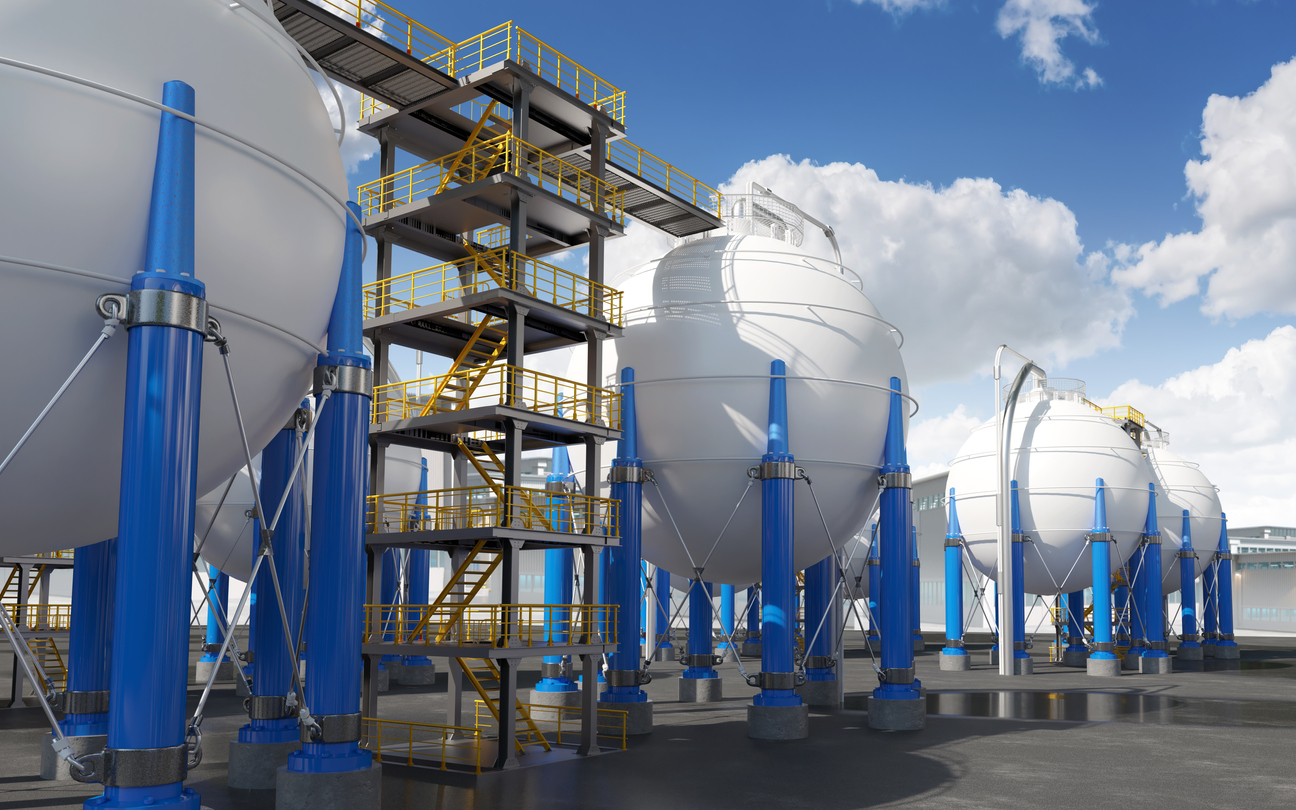Among the various uncapped energy tax credits that form the core of the Inflation Reduction Act (IRA), none has been more heavily contested than 45V, the hydrogen production tax credit. This credit, newly created by the IRA, allows hydrogen producers to claim credits for every kilogram of “qualified clean hydrogen” produced. The credit amounts range from $0.60 to $3 per kilogram of hydrogen produced, with larger credit amounts available for less carbon-intensive production methods which also meet prevailing wage and apprenticeship requirements.
The 45V credit comes in the context of a broader strategy to create a hydrogen-based economy, which has been under development for decades, since the inception of the Department of Energy (DOE) in 1977. More recently, the Infrastructure, Innovation and Jobs Act of 2021, also known as the Bipartisan Infrastructure Law, invested $9.5 billion in hydrogen programs, most notably the hydrogen hubs program, which funds the establishment of up to ten regional hubs in order to “create networks of hydrogen producers, consumers, and local connective infrastructure to accelerate the use of hydrogen as a clean energy carrier.” In addition, the carbon pollution standards proposed by the EPA in 2023 relied upon co-firing with “low-greenhouse gas” hydrogen, adding to the overall demand for such hydrogen (while also supporting the continued use of fossil fuels). Overall, DOE’s U.S. National Clean Hydrogen Strategy and Roadmap projects a vast and rapid expansion of hydrogen production, ramping up from current production levels of close to zero to 50 million metric tons of “clean hydrogen” production by 2050.
Since the passage of the IRA, industry interest in 45V has been high, due to its potential to unlock generous payouts for hydrogen producers. In December 2023, an updated JCT analysis estimated that 45V would provide for $4.7 billion in tax expenditures from just FY2023 through FY2027.
In op-eds and elsewhere, most of the debate over 45V’s implementing rules has focused on whether or how indirectly induced greenhouse gas emissions would be counted in the case of grid-connected hydrogen production. In short, the concern is that if grid electricity is used to power hydrogen production, that demand could displace existing loads on the grid, which could result in increased greenhouse gas emissions from maintaining our reliance on and postponing the retirement of gas peaker plants and other existing fossil fuel power plants. With the scale of the hydrogen economy buildout currently envisioned, the climate impacts of such induced emissions could be significant.
What has received less attention are the various environmental justice impacts and concerns related to hydrogen production, such as safety, air pollution, and water use. For example, certain hydrogen production methods are more likely to cause additional emissions of health-harming air pollutants like NOx, SO2, and particulate matter. In the case of environmental justice communities which are already overburdened by these issues, the siting of hydrogen production facilities in these communities would only add to the cumulative impacts of pollution that these communities have already been bearing.
Just Solutions submitted comments, along with several frontline organizations and other allies, on the 45V proposed rule to raise these concerns and draw attention to the impacts that increased hydrogen production may cause in environmental justice communities — especially in the current context, where many aspects of the hydrogen economy, particularly safety, remain unregulated. Treasury may lack the legal authority to address some of these issues within the 45V rulemaking because the statutory language does not explicitly authorize regulatory action on all of these issues. Nevertheless, we recommend tracking water impacts and requiring hydrogen producers claiming the credit to certify that they have hydrogen leakage prevention, minimization, and monitoring measures in place.
In addition, the Greenhouse Gases, Regulated Emissions, and Energy Use in Transportation or “GREET” model, developed by Argonne National Laboratory, proposed for use in calculating the lifecycle greenhouse gas emissions of a particular hydrogen “production pathway” does not address the climate impacts of hydrogen itself. Unrealistic and unproven background data assumptions embedded in GREET could also result in underestimating the climate impacts of hydrogen production pathways; for example, GREET estimates upstream methane leakage as 0.9 percent, compared to academic estimates in the range of 2.3 to 2.6 percent. The model includes a 96 percent capture rate for carbon capture and sequestration (CCS) equipment, even though that level of performance has never been achieved in a commercial facility. Also, the boundaries of the GREET model exclude greenhouse gas emissions embedded in equipment and infrastructure, as well as emissions from post-production activities (like compressing hydrogen for transport).
Furthermore, the GREET model does not account for the climate warming impacts of hydrogen leakage. While hydrogen itself is not a greenhouse gas, it indirectly contributes to warming through a series of chemical reactions in the atmosphere that lead to increased atmospheric levels of the greenhouse gases methane, ozone, and water vapor. In addition to requiring hydrogen producers to certify to addressing hydrogen leakage in order to claim the 45V credit, we urge the inclusion of hydrogen leakage in the GREET model, or any successor model as determined by Treasury.
In addition to the above points, our comment letter makes the following recommendations:
- Verification requirements should not be waived or phased in
- Additionality/incrementality should not be considered satisfied if an electricity source was placed in service 36 months before the hydrogen production facility, nor should the proposed 5% formulaic approach be allowed
- Temporal matching should not be considered satisfied by the proposed phase-in approach, which would allow annual matching until 2028
- Annual reporting requirements should be required of hydrogen producers claiming the credit, including water withdrawals and non-greenhouse gas air pollution
- Biomethane and fugitive sources of methane should not be allowed to be used to greenwash fossil feedstocks; feedstock eligibility should be limited; and Treasury should assume that methane would be flared in a baseline scenario
